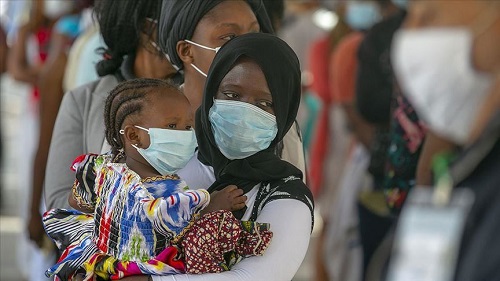
June 21, 2021 – The United States continues to exhibit signs of recovery from the coronavirus pandemic. Meanwhile, the United Kingdom is fighting off a prolonged infection surge – despite a robust vaccination program. Of more significant concern, the African continent is suffering from an explosion in new cases.
United States
The United States is benefiting from its robust vaccination effort. More than half of the entire population has been jabbed at least once. Among eligible persons (12 years and older), the rate rises to 62%. More than three-quarters of senior citizens are fully vaccinated.
This remarkable effort slashed new infection rates by two-thirds since mid-April to fewer than 4 per 100,000 people per day. In January, this rate peaked at 77.
The most severe cases have similarly diminished. COVID-19 patients occupy only one in twenty hospital beds. In January, the rate swelled to two in every five. Deaths with coronavirus fell to 300 per day, down from 3,500 in mid-January.
Still, the virus remains at large, and the risk of infection is present – as evidenced in the United Kingdom (which we discuss later in this article). The Institute for Health Metrics and Evaluation (IHME) envisions a (modest) resurgence at the end of the summer:
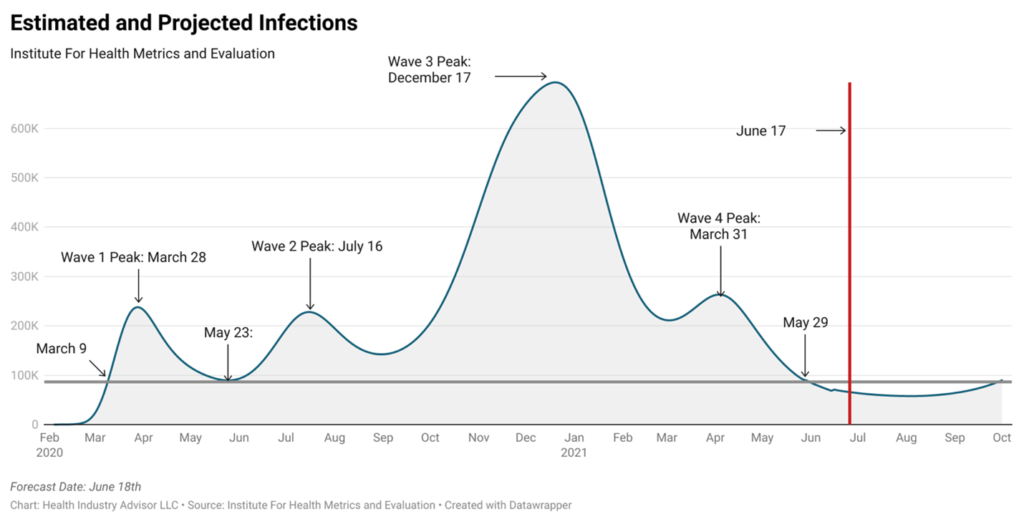
United Kingdom
The U.K. jumped to a fast start with its vaccination program, reaching half of its population more than a month faster than the United States. Even today, the U.K. has jabbed nearly two-thirds of its people, compared to half of the U.S. population.
At first, the vaccine effort paid remarkable dividends in the U.K.: Infection rates plunged an astonishing 97.5% in the first four months of the year.
Yet, the remaining unvaccinated population serves as a vulnerable target for the Delta variant first seen in India. In the last five weeks, the U.K.’s infection rate jumped sixfold and continues rising. Unvaccinated persons account for most new infections. However, infections remain decidedly lower than during earlier surges (April and November 2020 and January 2021).
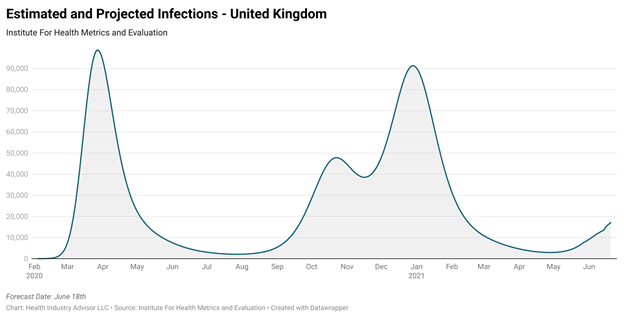
Further, the new spate of infections is yet to tax the healthcare system or correspond to a rising death toll. Fewer than two of every 100 new cases wind up in the hospital – a rate lower than any time since March 2020. At its peak, five times as many new cases warranted hospital care.
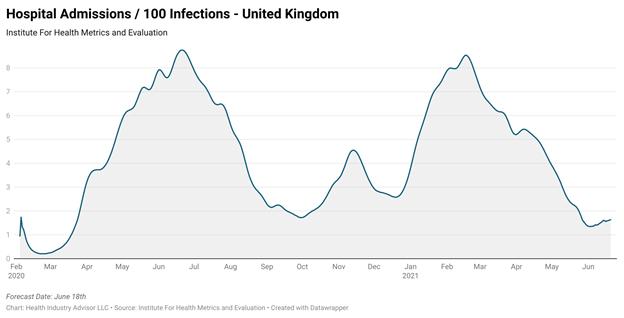
More encouragingly, the death rate reached its lowest point in the U.K. since early in the pandemic. Before the vaccine effort took hold, new cases were fourteen times more likely to result in death than today.
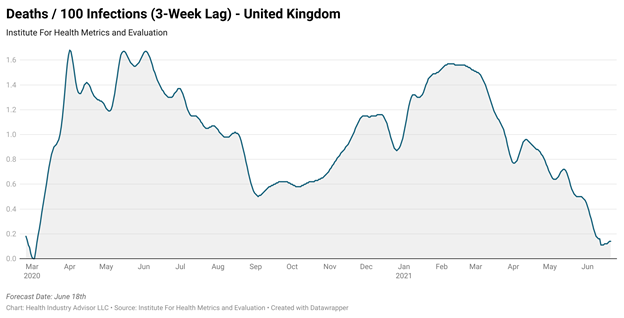
These improved outcomes – fewer hospitalizations and a lower death rate – suggest that the vaccines effectively reduce the severity of infections, and that the virus is infecting younger, healthier persons.
Africa
Since the pandemic began, the storyline repeated several times: a virulent variant spreads among an unvaccinated population. New infections surge until a combination of containment measures or vaccinations brings the spread under control.
The African continent has mostly avoided the virus for the past year. While tiny Seychelles (pop. under 100,000) ranks first globally in new infections per capita and sixth in infection prevalence since the pandemic began, most African nations rank low on both measures.
But a passive vaccination effort leaves the continent at significant risk. Through last week, African nations administered a mere three doses for every 100 people. The worldwide average stands eleven times higher; in North America, it’s twenty times higher.
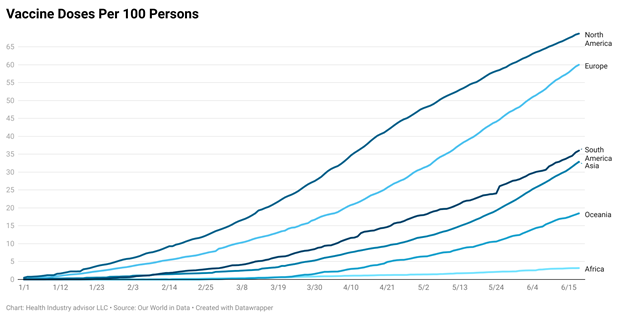
Inadequate vaccination efforts and low natural immunity (from a prior infection) leave the African people vulnerable to an outbreak. Unfortunately, signs of such an outbreak are emerging. In the past week, new cases in Africa spiked 29%; these fell 5% worldwide, including a 10% drop in North America and 14% in Asia.
South Africa reported the most significant week-over-week increase in new cases among African nations. This increase reflected a 50% spike in cases. Thirteen other African countries suffered even more significant surges on a percentage change basis; eight saw new cases more than double in a week.
These experiences illustrate the ongoing risk of a resurging virus, especially among the unvaccinated. In those countries with robust vaccination programs, the virus remains. However, vaccinations protect the most vulnerable thus, capping the severity of the spread. For those countries with weak programs, the risk of rapid and severe infection spread remains large.
Contributing writer:
Mark A. Van Sumeren, strategic advisor, Medical Devices & Integrated Delivery Networks
Health Industry Advisor LLC, provides a regular report on COVID-19 numbers for the health care industry.
For more information, or to sign up for the report, contact Mark at Mark.VanSumeren@HealthIndustryAdvisor.com; or visit www.HealthIndustryAdvisor.com.
